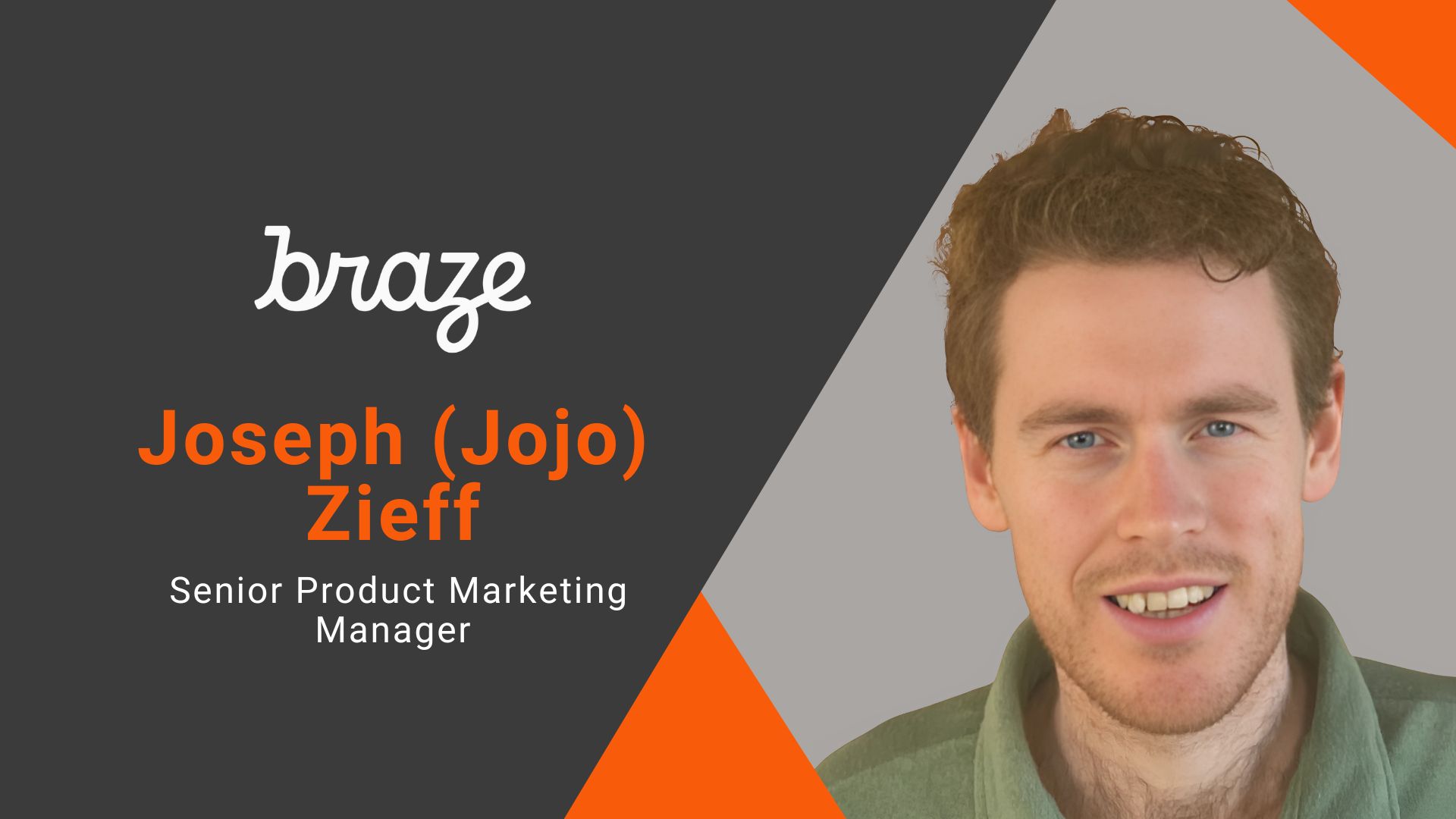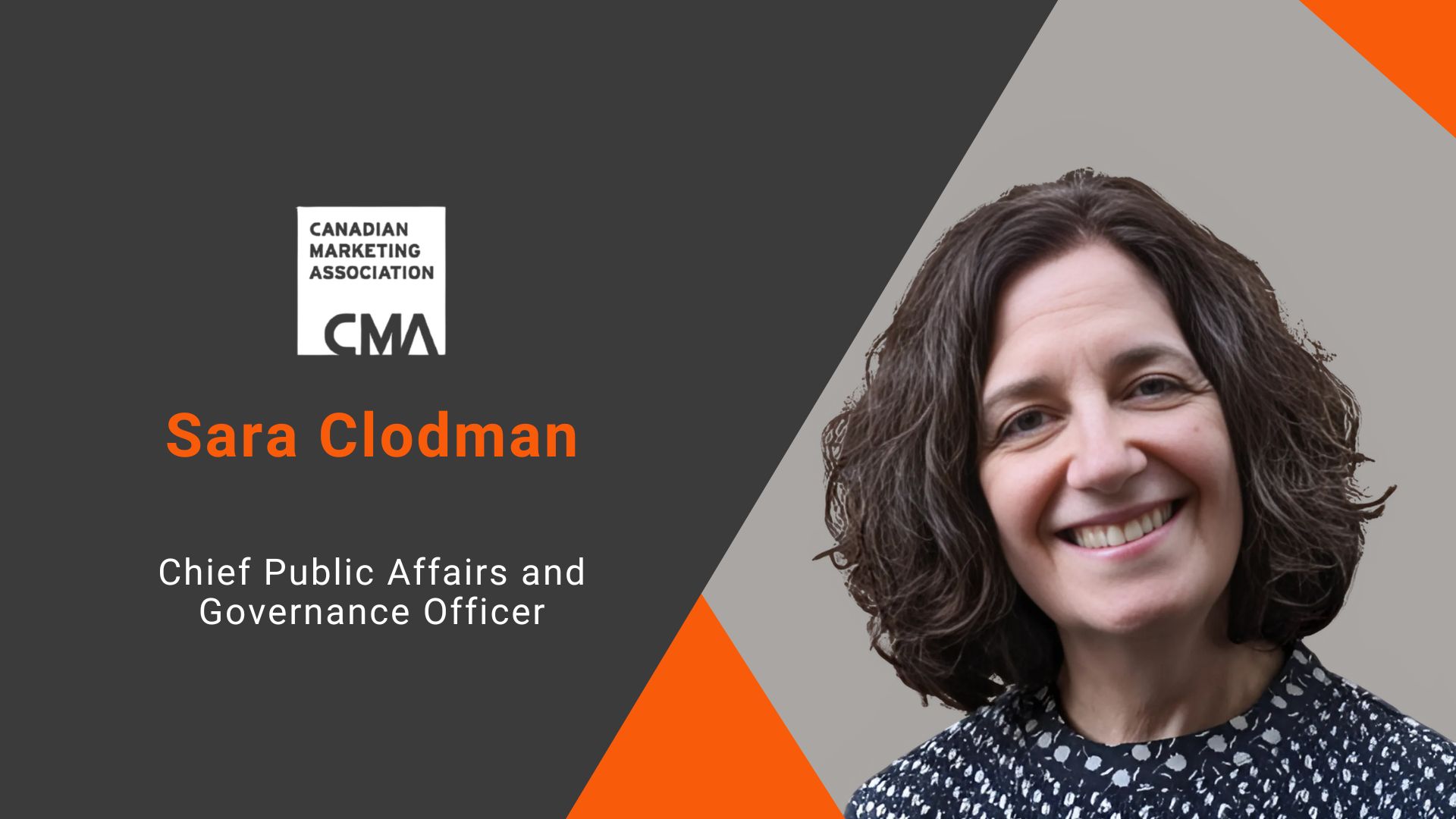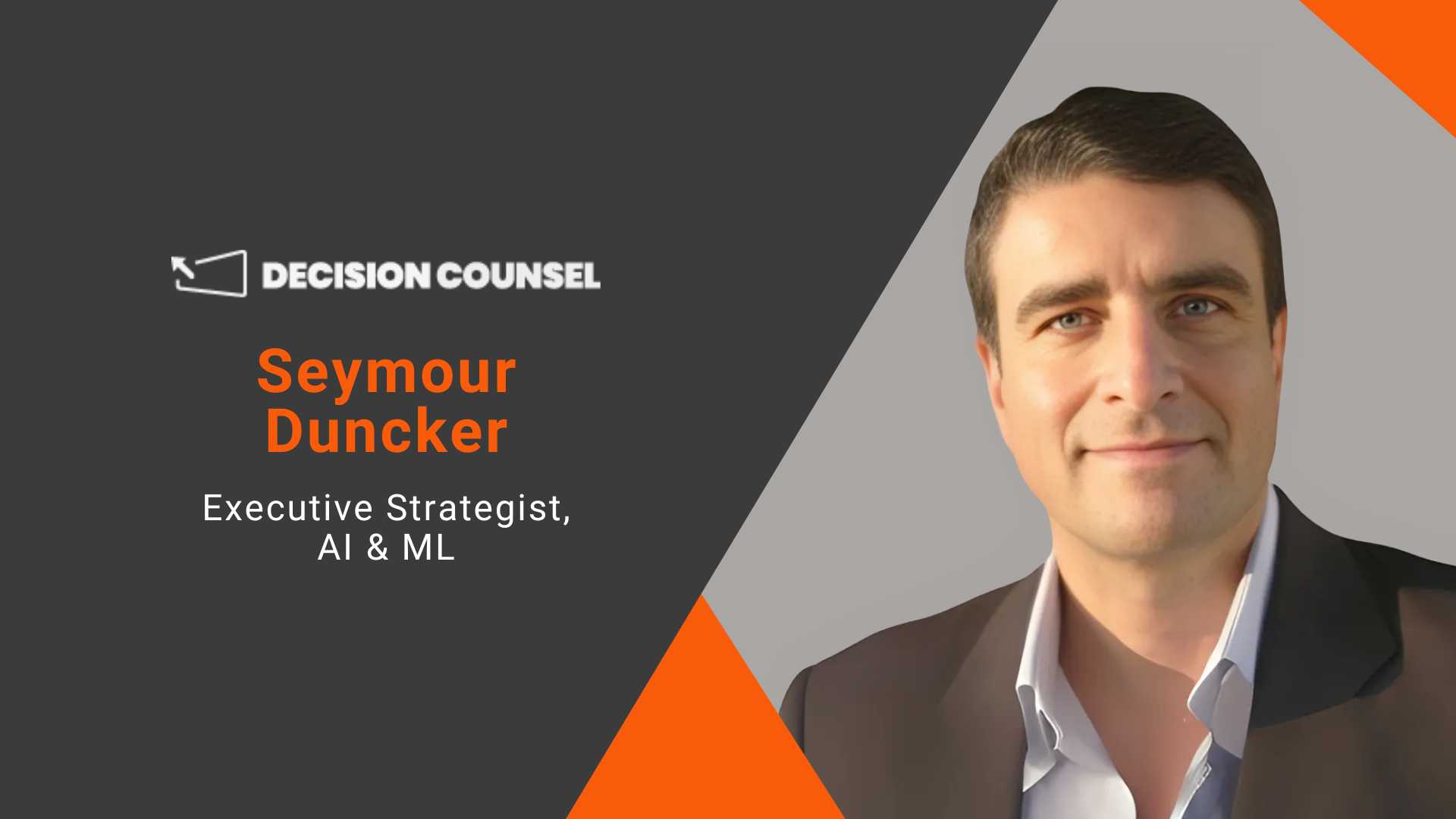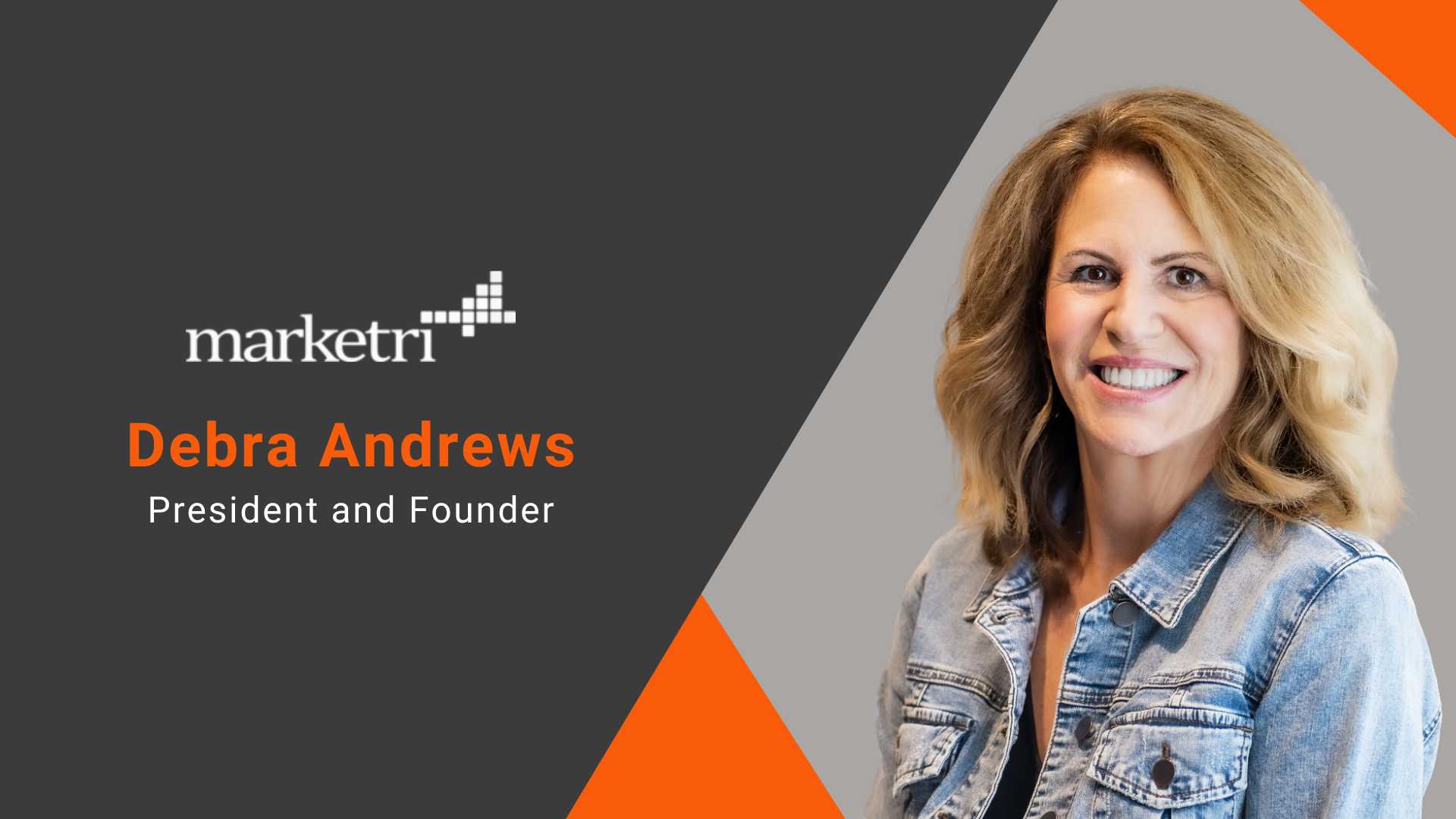
artificial intelligence
AI Agents & Reinforcement Learning: The Future of Customer Engagement | Jojo Zieff, Braze
artificial intelligence 8 Sep 2025
More than just enhancing personalization, reinforcement learning helps marketers drive meaningful outcomes by aligning individual experiences with their most impactful business goals. It helps marketers create a deeply relevant experience for customers, while optimizing any marketer-defined goals.
2. What kinds of behavioral or contextual data will be used to power more intelligent message optimization within your journeys?
3. In what ways will marketers retain creative control while letting AI automate experimentation and optimization?
4. How do you see the role of AI agents evolving within customer engagement platforms over the next 2–3 years?
5. What impact should enterprise customers expect on KPIs like engagement rate, retention, and CLV from this enhanced AI decisioning?
To resonate with consumers across both traditional and emerging channels, it’s no longer just about finding the right message, for the right channel, in the right moment—it’s finding the most relevant, end-to-end experience: the right copy and creative, combination of messages, the right sequencing of channels, and the right moments to send each message across the customer’s journey. We see the capabilities of reinforcement learning representing a fundamental shift within Customer Engagement. The successful deployment of machine-learning-driven and reinforcement-learning optimization is key to helping marketers achieve relevance at scale across the many different dimensions of a customer's experience.
Cross-channel engagement becomes truly orchestrated rather than simply coordinated—the AI determines not only message content but also optimal channel selection, financial offers, engagement timing, and more. Each interaction teaches the system something new about that specific customer, creating a feedback loop that becomes more effective over time, and delivers more relevant experiences for customers.
We are excited by OfferFit’s capabilities and how they will shape our approach for customer engagement. OfferFit AI agents make 6.4B agent decisions per day. Millions of end users are getting 1:1 personalized decisions a day - meaning marketers can orchestrate more deeply relevant experiences for their customers, at scale.
AI-Driven Product Experiences: Personalization, Trust & Data Accuracy | Romain Fouache, Akeneo
artificial intelligence 8 Sep 2025
1. Given that nearly one-third of consumers complete purchases based on AI recommendations, how is your organization evolving its AI capabilities to influence decision-making across the customer journey?
Based on our data, we know that about 33% of consumers have completed a purchase based on AI recommendations. We also know that 84% of them were satisfied with the purchase – a significant success rate. This tells us that the majority of people are benefiting from these recommendations that are relevant and personalized to their needs, which is why we are always looking for ways to evolve and mold our AI capabilities to go beyond the basics, such as “you previously purchased a similar item so you might like…” and focus on helping to ensure that recommendations and product information are complete, consistent, and contextually relevant for every shopper no matter where they are in their journey. It’s not just about nudging a sale, it’s about building and fostering a greater level of trust, reducing friction, and helping consumers feel more confident in their purchases.
2. How do you assess the current maturity of your product information systems to support AI-driven personalization across your digital commerce channels?
Product information maturity is a critical foundation for any successful AI strategy, especially when it comes to personalization. Akeneo helps brands assess this by providing the right foundation of technology, and through a unique blend of data audits, system diagnostics, and customer journey mapping to better understand where content is falling short. Most of the time, the challenge isn’t the lack of data; it’s that the data is siloed, inconsistent across channels, or doesn’t have the right context that AI needs. Looking at key indicators such as readiness, completeness, and consistency helps evaluate maturity. Once there is a baseline, we help customers move up the maturity curve and automate where possible to scale AI personalization efforts.
3. How is your team measuring the impact of AI implementations on key metrics such as product return rates, customer satisfaction, and conversion efficiency?
AI isn’t valuable unless it’s working to drive business impact, so it’s important to track key metrics to ensure efficiency and accuracy. We are always looking to tie our implementations and product offerings to our clients' success metrics that matter, and customer satisfaction, conversation efficiency, and return rates fall into that category. For example, when product information is incomplete, we know it leads to confusion and frustration, AKA more likelihood of returns. So, using AI to automatically flag gaps, suggest improvements, scan reviews for common themes, and generate missing content allows brands to enrich their product content with the help of our AI tools.
4. With trust in AI-powered features still emerging, what measures is your organization taking to ensure transparency around how AI is used in customer interactions and data handling?
Increasing trust in AI is an issue that every company is facing. Without trust, the technology will fall flat, so it’s top of mind to increase. At Akeneo, our approach is always a transparency-first mindset. That means we are crystal clear with our customers, and ultimately their customers, about how, when, where, and why AI is being used and incorporated into the product experience. For example, if an AI model is working to enrich product descriptions or recommending alternative options, we make sure that users know its AI-driven and provide that context. Or if AI is scanning reviews to highlight themes, we outline that clearly to consumers.
5. In what ways is your organization investing in improving product data accuracy and enriching descriptions to support AI applications such as improved search results, summaries, and personalized recommendations?
AI is only as smart as the data that it’s fed. For Akeneo, that means the product data that it’s given. A major aspect of our investment is going toward helping brands not only clean up their plethora of data and information, but also to ensure it’s AI-ready. Our PIM platform incorporates AI capabilities that can detect inconsistencies, suggest category-specific improvements, and generate richer, more contextual descriptions at scale. This is essential for powering better search results, more accurate summaries, and ultimately, recommendations. Because when marketers and product teams can collaborate and enrich the product data faster, they’re able to provide a strong customer experience.
6. How is your leadership balancing the pursuit of AI innovation with the need to establish ethical boundaries that prioritize user consent, data privacy, and transparent value exchange?
Our roots as an open-source company have instilled a deep commitment to transparency, openness, and user trust, which are values that continue to guide our approach to AI innovation. As we develop and integrate AI capabilities across our platform, we remain committed to upholding ethical principles, particularly around user consent, data privacy, and transparent value exchange. We believe that innovation should never come at the cost of trust, which is why we prioritize building AI features that are explainable, auditable, and respectful of customer data boundaries, while ensuring users understand how value is being created and shared. Our commitment to openness is the foundation for how we shape the future of AI at Akeneo.
Get in touch with our MarTech Experts.
Ethical AI in Marketing: Balancing Innovation and Trust | Sara Clodman, CMA
artificial intelligence 8 Sep 2025
1. What strategies should leaders employ to ensure their teams are adequately trained and prepared for AI integration?
The most critical strategy for AI integration is to treat it as a continuous process, not a one-time project. AI is evolving rapidly, and marketing teams need structured, sustained support to build confidence and competence. According to our recent Generative AI Readiness Survey, in collaboration with Twenty44, more than half (56 per cent) of marketers reported receiving either no training or ineffective training on AI tools. That's a clear signal that more investment is needed in practical, role-specific upskilling.
Leaders should start by setting clear expectations for how AI will be used, developing guidelines for what tools are approved, who reviews AI-generated content and how to manage privacy and consent. Training should help teams not only operate AI tools, but also review their outputs carefully. For example, AI-generated copy should be checked for accuracy, audience targeting should be monitored for fairness and organizations should ensure that customers understand when AI is being used.
To help organizations on this journey, the CMA has developed resources like the CMA Guide on AI for Marketers and the CMA Mastery Series of weekly playbooks. These resources provide practical advice on adopting AI tools, setting policies and reviewing outputs. By combining skills training with clear guidelines and review processes, leaders can help their teams use AI effectively and responsibly.
2. How can companies make their AI processes more understandable to consumers and stakeholders?
Making AI processes more understandable to consumers and stakeholders isn't just about disclosure statements; it's about designing transparency into the experience. Trust is more than a value: it's a strategic asset that determines how brands grow and endure.
Transparency means not only stating that AI is used, but helping people intuitively grasp when and how AI is playing a role in product recommendations, personalized content, and so forth.
One way to do this is by creating real-time touchpoints that signal AI involvement. For example, prompts like "Why am I seeing this?" in recommendation engines or "Reviewed by a human" tags in chatbots make AI more tangible, and more trustworthy.
Similarly, a simple note like "This content was generated with the help of AI" in emails or apps can manage expectations and build trust. Some companies are introducing "transparency hubs" or layered explanations where users can find out whether a piece of content or interaction was AI-assisted. These cues provide clarity and empower choice.
Internally, explainability dashboards help customer-facing teams respond to inquiries with confidence and provide insight into how decisions are made. Embedding explainability doesn't require revealing proprietary algorithms: it's about giving people enough information to understand how AI contributes to their experience, how targeting decisions were made, and ensuring teams are equipped to answer questions if concerns arise.
Ultimately, the brands that make their AI visible, relatable, and explainable will build trust and achieve greater success.
3. What lessons can be learned from international markets that are ahead in AI integration?
Strong governance creates a more predictable environment for innovators, encouraging responsible development and investment. It gives organizations the confidence to experiment, knowing the rules of the game. It also sets a higher bar for trust, which is increasingly a differentiator in competitive global markets.
The European Union (EU) has taken a bold and early lead in AI governance, offering a globally recognized reference point for responsible innovation with its General Data Protection Regulation (GDPR). Its emphasis on transparency, accountability, and fundamental rights has helped shape a culture of responsibility across industries and jurisdictions.
That said, being first doesn't always mean getting everything right. For example, the GDPR improved data protection rights and awareness for consumers, but its shortcomings – from interpretational ambiguity to over-compliance and operational strain – offer critical lessons for any nation developing its own framework.
Other countries, like the U.K. and Singapore, have pursued a more flexible, risk-based approach that aims to support innovation while safeguarding public trust.
Canada has the opportunity to evaluate what has, or has not, worked in other jurisdictions and to develop an approach that serves as a model for the world, while reflecting and supporting local conditions, practices and expectations.
The key lesson from these international approaches is that proactive governance builds trust. Canadian organizations can lead by embedding these principles now, without waiting for legislation:
• Establish pre-defined ethical checkpoints for all AI-powered marketing campaigns
• Use visible content labels such as "AI-generated" to maintain transparency
• Display confidence scores or "human approval" indicators in decision systems
• Conduct regular diversity and bias audits
• Publish internal reports on AI use to foster transparency
These measures build internal confidence and external trust.
4. How should marketing leaders balance innovation with ethical considerations to maintain consumer trust?
Ethics and innovation are not competing priorities; they are inextricably linked. The most durable innovations are built on an ethical foundation.
Companies have existing codes of conduct, ethics, privacy principles, and brand safety standards. But many of these were designed before the age of generative AI. Leaders should review existing ethics frameworks through an AI lens, ensuring they are updated to address issues like bias in automated targeting, transparency in AI-generated content, and accountability for machine-assisted decisions. This is not about reinventing governance — it's about evolving it to match today's reality.
An effective system ensures innovation and ethical responsibility reinforce each other.
This begins with integrating governance into AI-related decision-making from the start. Practical steps may include:
• Pre-launch ethical reviews of AI-generated content to identify bias, tone sensitivity, or fairness issues
• Ensuring inclusive representation in audience segmentation and flagging patterns that risk exclusion
• Providing clear opt-out options when AI is used for personalization
It’s also important to define accountability, which is best achieved by establishing a formal "human-in-the-loop" protocol. This approach goes beyond theory and answers the critical operational questions: Who is the designated person responsible for reviewing and approving AI outputs? Who has the authority to monitor for ethical compliance and the duty to intervene when something goes wrong? By embedding human oversight directly into the workflow, marketing leaders ensure that technology serves strategy, not the other way around.
Establishing these structures early helps translate values into action, making ethics a consistent part of the workflow, not an afterthought.
Organizations that treat ethics as operational, not optional, are better equipped to navigate complexity and earn lasting trust.
Integrity doesn't constrain innovation, it gives innovation staying power.
5. What emerging AI technologies do you foresee having the most significant impact on marketing strategies in the next five years?
Over the next five years, AI will evolve from a creative assistant into a dynamic co-pilot: able to personalize content, adapt journeys and optimize campaigns across channels with minimal human input. The most significant impact won't come from tools that merely automate tasks, but from intelligent systems that can think, learn, and act autonomously.
A major shift will be the rise of AI agents — intelligent systems that don't just recommend actions but autonomously execute them. These agents will manage complex tasks like campaign orchestration, budget adjustments, and real-time response to customer behaviour, enabling a move from reactive to proactive, autonomous marketing.
Predictive analytics and adaptive content engines will also play a growing role. Marketers will be able to tailor experiences based on real-time signals and audience context, while generative tools will scale voice, visual, and written creative across platforms.
Perhaps most importantly, AI is advancing ethical and inclusive marketing through tools that analyze social sentiment, generate accessible content like captions and translations, and adapt messaging for diverse communities.
The key differentiator won't be the tools themselves, but how responsibly they're deployed. The most successful marketers will use AI as a creative and analytical partner, maintaining human oversight to ensure alignment with brand values, ethics, and consumer trust.
The future belongs to marketers who design with both intelligence and intention—letting AI amplify their values, not just their velocity.
6. What role do industry associations play in guiding ethical AI adoption, and how can companies collaborate with such bodies to shape the future of marketing?
Industry associations provide an essential platform for setting standards, sharing knowledge and fostering collaboration as AI adoption grows. By offering guidance, convening expert voices and translating emerging regulations into actionable practices, associations help businesses navigate AI's complexities with more confidence.
Associations play a vital liaison role, ensuring the marketing industry's perspective is represented in policy discussions and regulatory development. They also help nurture best practices by developing shared frameworks, toolkits, and use cases that companies can adopt and scale. As educators, they elevate industry competence by upskilling marketers and leaders on the risks, opportunities, and operational realities of AI.
Companies can collaborate by participating in working groups, contributing to discussions about ethical guidelines, or sharing their own case studies and lessons learned. This collaboration not only helps shape the resources and standards that emerge but also ensures businesses stay connected to evolving best practices.
Associations also serve as a bridge between marketers, policymakers and technical experts. Engaging with these groups enables companies to anticipate regulatory changes, align with industry expectations and build AI strategies that balance innovation with accountability. By working together, the marketing community can help ensure AI delivers long-term value while protecting trust and fairness.
Get in touch with our MarTech Experts.
AI in Marketing 2025: Seymour Duncker on Strategy, Personalization & Pitfalls
artificial intelligence 27 Aug 2025
1.What marketing functions or workflows have benefited the most from AI so far and which areas remain largely untapped?
While the hype around AI often runs ahead of reality, digital advertising has proven to be one domain where the lift has been real and measurable. At Decision Counsel, we can certainly attest to that. Ad production—especially for programmatic platforms—has seen clear gains thanks to the rules-based structure of digital channels. Marketers can now spin up thousands of ad variations from just a few core creatives, rapidly testing at scale to find what works best. More broadly, the earliest wins with generative AI are concentrated in “maker” workflows. According to Jasper’s State of AI in Marketing 2025 survey, nearly 60% of marketers already use AI for everyday content tasks, including copywriting, ideation, SEO tweaking, campaign testing, and desk research.
Meanwhile, most marketing teams still have a long way to go: only 29% rate their AI maturity as “advanced.” More transformative applications—like enforcing brand governance, automating full campaign workflows, or delivering true one-to-one personalization—remain underdeveloped. And short-form video still has yet to see generative AI break into mainstream production. The next wave of adoption will go well beyond content generation, and will be about finding ways of embedding AI deeper into higher-level decision-making, audience needs, and the full customer journey.
2.From your vantage point, what are companies most commonly getting wrong in their approach to AI-powered marketing?
The most common misstep companies make is expecting magic. Especially in creative teams, there’s often a misplaced hope that AI tools will act like a “one-click” fix—tap a button and watch campaigns write themselves. But creativity doesn’t work that way, and neither does AI. The real work lies in understanding the creative process deeply enough to thoughtfully integrate new tools—augmenting ideation, accelerating iterations, and ultimately optimizing the entire workflow.
Jasper’s survey also found that 67% of marketers now cite “lack of education and training” as the number one barrier to adoption—up from 64% last year. Other leading blockers include “lack of awareness or understanding” (56%) and “lack of strategy” (43%), with “lack of resources” also rising. Concerns about “unknown risks” are decreasing—down to just 25%—showing that fear is fading. The real obstacle isn’t the fear of AI, but a lack of readiness to utilize it effectively. Closing these gaps in literacy, strategy, and governance is the clearest way forward.
3.Was there anything you expected to happen with AI in marketing that hasn’t materialized or that’s taken a different form than anticipated?
Generative AI is seemingly everywhere, but still far from fully integrated. While individual use cases like faster copywriting or sharper research have delivered tangible wins, most marketing teams still haven’t figured out how to connect these wins across the full value chain. Critically, few have linked AI efforts to ROI in a way that feels systematic or scalable. In other words, the novelty has worn off. What’s missing now is the operating model—the repeatable processes, playbooks, and cultural alignment—that elevates isolated success into enterprise-wide transformation. Sixty-three percent of marketing teams already use generative AI, 78% of which report improved outcomes, according to Jasper. However, only 43% of adopters have formal enterprise-level AI programs in place. Most teams only began serious experimentation in 2024, and full-on pilot failures are rare—just 3%. The tools are working. What’s lagging is the strategic framework to turn experimentation into a durable advantage.
4.What risks do brands face when personalization becomes overly automated or intrusive? How can they avoid that trap?
There’s a fine line between personalization and intrusion—and brands are stumbling across it. When AI-driven personalization becomes overly automated or impersonal, it doesn’t deepen loyalty; it triggers backlash. Simply labeling a product as “AI-powered” can dampen consumer enthusiasm, with broader concerns about AI, such as data privacy and job displacement, also coming to mind. Instead of feeling seen, customers might start feeling watched, and that’s a trust killer. Duolingo and Audible each learned about these sorts of pitfalls the hard way earlier this year. After all, personalization should be a tool for empathy, not efficiency at all costs.
Avoiding the over-personalization trap means finding a way of blending hard systems with a soft touch. That starts with privacy-by-design: only collect what you need, get clear consent, and explain the value exchange in easy-to-understand language, not legalese. Then integrate real-time sentiment tracking, straightforward opt-outs, and emergency “kill switches” that halt personalization flows when a user shows signs of discomfort. Brands that get personalization right anchor it in the C-suite. As McKinsey advises, a “leadership triad” of CEO, CMO, and CFO should jointly own the AI agenda—so goals, ethics, and accountability stay intertwined from day one.
5. What are the biggest challenges marketers face when implementing AI from data, tech stack integration, to internal alignment?
The biggest AI implementation hurdles often are less about adopting new tools and more about overcoming the drag of old ones. Most marketing tech stacks were designed for batch email campaigns and clickstream analytics, not for AI-driven workflows powered by real-time vector embeddings or agents. Data silos and technical debt are real and widespread: 86% of enterprises say they must overhaul their systems to deploy AI agents effectively. And even where the desire is there, many teams are still buried under the weight of maintaining legacy infrastructure. Even with the right tools, transformation stalls if people and systems aren’t ready. Many marketing teams aren’t yet AI-literate and still wary. AI’s biggest gains, however, come from deep workflow integration. The art is in pushing forward without getting stuck in the weeds of outdated systems. The solution lies in incremental embedding, thoughtful upskilling, and change management that balances the potential of AI with the inertia of the past.
6. Is there anything you don’t think AI will solve or shouldn't try to in the marketing space?
AI should never solve for the heart and soul of a brand. AI can and will increasingly help and aid in that process, certainly, but ultimately that’s the marketer’s job, and it requires an elevated sense of empathy, nuance, perspective, wisdom and judgment that, as far as I can see, only humans and the human experience can provide. Without true heart and soul—the kind you get from a human marketer—branding will always fall flat, and no amount of AI innovation can reproduce the trials, tribulations, fear, loathing, and joy of a person pouring themselves into a brand.
AI is a tool, not a crutch. And it can very easily be misused or overused. Discernment is key, and as AI advances, so will the importance of the ability to discern when AI is appropriate and when it is not.
Get in touch with our MarTech Experts.
AI-Powered Marketing for Law Firms: Jake Soffer on Scaling Responsibly with FirmPilot
artificial intelligence 19 Aug 2025
- Data Governance: Perform a clean-up of existing marketing and client data; set common definitions (lead, case, contact, etc.).
- Technical Integration: Use APIs or connectors to sync FirmPilot with the CRM and any email/analytics tools, ensuring that campaign data flows automatically into sales pipelines.
- Process Design: Define clear handoffs and feedback loops. For instance, every AI-generated lead should be tracked in CRM to closure so the platform can learn what worked.
- Pilot and Iterate: Roll out the platform with one practice area or campaign first, monitor for issues, and adjust before scaling to the whole firm.
AI & the New Era of Online Brand Protection – Matteo Amerio
artificial intelligence 4 Aug 2025
1. In what ways do you define success in online brand protection today, and how does that differ from older models?
Success in brand protection is no longer about playing whack-a-mole with takedowns. The old model was a volume game—counting how many listings you could manually remove. It was reactive and inefficient.
Today, we define success as achieving mastery over a brand’s online channels. This is a fundamental shift from a manual-hour-based approach to a strategic, data-driven one.
Success is a metric that is unique to each brand. For one, it might be reclaiming lost revenue. For another, it's about preserving brand equity or enforcing distribution policies. Our approach is to provide the data and tools to achieve that specific goal. If the goal is anti-counterfeiting to clean up online marketplaces, we will then measure success by how "clean" a brand's channels are, how cooperative platforms are, and the overall visibility of both authentic and counterfeit content. It’s about moving from simply chasing infringers to strategically controlling your online presence.
2. Can you explain how the Cleanliness Score™ is calculated and how brands can use it to assess their online health?
Think of the Cleanliness Score™ as a daily credit score for your brand's online health. It's a simple, powerful KPI that transforms an abstract problem into a measurable one.
The calculation is the result of six years of focused R&D.
For brands, this score provides immediate clarity. They can see if their channels are 99% clean or 50% clean, track progress over time, and use this objective data to hold marketplaces accountable and focus enforcement where it's needed most.
3. How does the Deep Semantic Detection capability improve the detection of disguised or non-textual infringements?
Traditional search technology is like looking for a needle in a haystack by only searching for the word "needle." Our Deep Semantic Detection is like a bloodhound—it follows the scent of an infringement, even when the sellers are trying to cover their tracks.
It works by mimicking the complex path a determined buyer uses to find fakes. They don't just search "counterfeit Brand X watch" on a marketplace. They start on Google, find a discussion on Reddit, follow a link to a seller’s page, and then browse related items on a platform.
Our technology automates this "graph traversal" process. This approach excels for two key reasons:
- It uncovers hidden networks of infringers who intentionally avoid using trademarked terms.
- By following these intelligent pathways, itidentifies infringing content much faster and more accurately than traditional searches, cutting through irrelevant noise.
So while they might use vague phrases like "clover-style jewelry" instead of "Van Cleef & Arpels Alhambra," our system connects the dots and finds them anyway.
4. Can you walk us through how risk clustering and SKU detection improve threat prioritization and resolution?
When you're facing thousands of potential threats, you can't treat them all equally. Our strategy for intelligent prioritization relies on two core pillars: a sophisticated scoring system for ranking threats and granular data for precise, automated actions.
- Risk Clustering: We move beyond a simple "high risk" flag with a more advanced, two-part scoring system. This ensures our clients' resources are focused on the threats that deliver the fastest, most significant impact.
- SKU Detection: This provides the critical layer of data granularity needed for modern enforcement. This capability is especially powerful for managing grey market distribution and executing highly targeted enforcement strategies.
5. How customizable is the Corsearch Zeal 2.0 platform for brands with different risk profiles or industry-specific needs?
Corsearch Zeal 2.0 wasn't built with customization as an add-on; it's foundational to its architecture. The core logic engine is tailored to each brand's unique risk profile from day one.
This customization is both deep and practical. The Risk Score is calibrated using a "brand bible" we develop with each client, defining what constitutes an infringement for their specific products. The Enforceability Score is tuned based on the brand's exact enforcement rules and the known policies of the platforms they need to police. This means the sorting and prioritization of threats isn't based on a generic, one-size-fits-all algorithm. It’s a bespoke enforcement engine configured for a brand’s unique needs, whether they're in luxury goods, pharmaceuticals, or fast-moving consumer goods.
This deep adaptability extends beyond the core logic and into the entire workflow. Brands can configure everything from product categories and custom data labels to reporting dashboards. The platform adapts to the client's team structure and objectives, not the other way around. We provide a powerful, configurable engine; our clients build their ideal command center on top of it.
6. How does Corsearhc Zeal 2.0 adapt to evolving threats, such as generative AI content misuse or new marketplace behaviors?
Our defense against emerging threats is a proactive, data-driven feedback loop, not a static rulebook.
For new marketplace behaviors—like infringers using new visual tricks to hide logos—we constantly monitor platform data. Our Cleanliness Scores and platform cooperativeness metrics act as an early warning system. Because our AI models are designed for rapid retraining, we can quickly adapt our detection capabilities to recognize and neutralize new tactics at scale.
Regarding Generative AI, we see it as another vector of attack, but not an unbeatable one. AI-generated fakes are often trained on flawed or "dirty" data, as counterfeiters lack access to official brand assets. This process inevitably creates subtle but detectable errors—mistakes in packaging details, incorrect logo placement, or flawed product renderings.
Essentially, we fight AI with more sophisticated, specialized AI. Our systems are trained to spot these tell-tale imperfections. By maintaining this agile, data-centric approach, we ensure we are always prepared to analyze and counter new threats the moment they emerge.
Get in touch with our MarTech Experts.
B2B Marketing Trends 2025: Insights from ROI·DNA's Surj Gish
artificial intelligence 4 Aug 2025
There are a couple of primary differences between regions: cultural nuances and technical variations.
We’ve been doing account-based B2B marketing since before it became popular. The ability to focus on specific accounts or groups of accounts based on fit and value has been game-changing. However, it’s not a cure-all—factors like business maturity, sales support, and internal alignment all play a role in ABM success. As a result, we still run targeted demand generation campaigns where they make sense.
The pace of change continues to accelerate, and we’re here for it. The easy answer is AI and automation, and we’re certainly investing in these areas to deliver faster, work smarter, and scale more effectively. But we’re also listening more closely than ever to our clients. One of the most important things we heard was the need for customized solutions instead of off-the-shelf tools.
Obviously, serious expertise is table stakes at this point. Over the past year, we've seen clients place much greater emphasis on the partnership and people aspects of their agency relationships. They want to work with engaged, committed teams—not at arm’s length. They want to actually enjoy the experience.
This is a tricky one. A lot of people would point to using AI to scale, and that’s a solid answer. Like many, I see huge potential in scaling pseudo-1:1 campaigns with AI tools.
A big shift we’re already seeing is in the search landscape. SEM is typically a major part of program spend, but search isn’t limited to traditional search engines anymore. We now think of holistic search as a combination of organic and paid results, plus AI-generated responses—from ChatGPT answers to in-SERP AI results. More and more, people are seeking answers outside of standard search engines.
Omri Shtayer on AI Agents and Data-Driven Growth
artificial intelligence 1 Aug 2025
1. From a strategic perspective, how crucial is the depth and recency of data in the effectiveness of AI-powered insights for your organization's growth initiatives?
No organization should ignore the potential of AI to improve marketing effectiveness and productivity. That being said, marketing leaders shouldn't expect these tools to deliver the results if they’re being starved for data – that’s when you run into the unfortunate syndrome of chatbots “making stuff up” in an attempt to answer a question. The data being fed to the AI tool needs to be as complete and recent as possible, so that the AI tool stack is well informed and knowledgeable about your company and your market.
That’s particularly critical as we move from chatbot interactions to deploying AI Agents that we expect to do work on our behalf, more autonomously over time. We need them to execute tasks based on hard data and well-defined plans.
Think about data being like fuel for an aircraft. Skimp on fuel, and you won’t get high performance. You may not make it to your destination.
2.In what ways do you believe specialized AI tools can provide a competitive advantage in areas like SEO, sales, and market trend analysis?
Specialization in the software and the data is how we make AI more productive and impactful for marketing and sales. In addition to providing AI tools with high quality and up to date data, we want to focus it on the problem we aim to solve.
Similarweb’s mission is to provide marketers with more and better data, but the beauty of adding AI agents into the mix is that we don’t have to worry as much about overwhelming the users. Similarweb’s AI agents can cover a lot of ground very quickly, meaning, they can accomplish in minutes what otherwise would be time consuming research tasks.
With a conventional user interface for a data system, we work on developing individual screens and charts and dashboards to help users understand and navigate through the data. But given the limitations of our poor human brains, as consumers of that data it still takes time to look at each screen, understand what it means, and maybe download data into spreadsheets for additional analysis.
Instead of looking at one screen or one spreadsheet export at a time, they can look at all the data and make sense of it for us. We get the answers we’re looking for, all together, not in bits and pieces.
That doesn’t mean you let them do all the thinking for you. You and your colleagues still have to review the analysis the agent has produced and determine whether it is sound and makes sense for the organization. You might want to do some spot checking of the underlying data, just as you would for a new employee whose work you don’t entirely trust. However, the odds that the data will be correct and the output will be useful are a lot higher if you work with an AI agent that is specifically trained on marketing and the data that is important to marketers.
3.The "AI Meeting Prep Agent" is cited for reducing research time. How critical is the efficiency gained from such tools in optimizing the productivity of sales and business development teams within your enterprise?
The AI Meeting Prep Agent is a good example of focusing the technology on a common business task or challenge. A good salesperson will go into a meeting prepared to achieve the best outcome, and it’s something they do many times every week, or even every day. The AI agent functions as a capable assistant who finds out your goals for the meeting and produces a thorough briefing on the people you will be meeting with and the opportunities and challenges of their business, based on news reports and company data as well as digital signals.
The reception from Similarweb Sales Intelligence customers has been very enthusiastic, with customers sharing feedback about saving hours of work and going into meetings better prepared. We have a similar story with our AI Content Strategist, which crunches data on SEO and competing companies, identifies content gaps, and makes specific recommendations.
In addition to the agents announced at the end of May, we’re working on a lead generation agent, a competitive intelligence agent, a stock research agent, and an ad creative agent — while scanning the horizon for other opportunities to build or buy additional products. We also have several projects under way to create agents for our own internal use.
4.How can rapid AI-driven insights into emerging market shifts directly inform and accelerate your strategic decision-making processes?
Everyone who works in digital marketing knows how fast things change. Even before the current panic over changes in Google search (search clicks decreasing as summary AI Overviews appear in the results more often), digital marketers were continually forced to adapt to changes in the algorithm. The same concept applies for marketing on Facebook, LinkedIn, or X. All of this has to be considered before marketers begin to evaluate changes in the competitive landscape. For example, look at how fast Temu went from nothing to a major ecommerce player – becoming the #2 most visited ecommerce website in the US by August 2024 – and how fast it retreated from the US market in the face of new tariff policies in the past few months, throttling back paid advertising so that it dropped to #11 in May.
Change is constant in marketing, and often it feels like a full-time job to stay on top of. Even with access to good data, marketers could use help sorting through it. This is where AI agents can assist. They take us beyond providing dashboards of data to providing analysis and making recommendations.
5.Looking ahead, what specific opportunities do you foresee in adopting and scaling AI Agent technologies across diverse departments within a large enterprise, and how do you plan to address them?
I love that question because the answer is: we’re just getting started imagining all the possibilities. The whole MarTech industry is going to shift to competing over who can deliver the best agents. And by best, I don’t mean the ones with the flashiest demos, I mean the ones that deliver practical results.
Our customers are just getting started sifting through all the AI-related pitches that are coming their way to determine what’s real and what’s smoke and mirrors. As they get more comfortable with this agent-driven generation of AI technology, they will be better equipped to ask for what will be useful to their organizations.
Don’t get me wrong, we’re already seeing strong demand and a pipeline of desirable AI agents that will keep us busy for a long time to come. I think the “scaling” limit is less about scaling technology than it is about learning to work with it productively. Enterprises will need to scale their leadership in AI adoption, educating employees on embracing their new AI team members and putting them to work productively.
At the same time, skepticism is entirely warranted. Every MarTech product is going to claim to be an AI product as part of the same old tech hype cycle. Tech buyers will need to sort out what’s real. It’s my job to ensure Similarweb comes down on the right side of that.
Get in touch with our MarTech Experts.
Page 1 of 8
Most Recent
The 2025 Reality of the Solo Marketing Coordinator
Interview Of : Debra Andrews
How AI Is Transforming Martech – Jigar Agrawal from eSparkBiz
Interview Of : Jigar Agarwal
Transforming Marketing into a Growth Engine
Interview Of : Alexandra B. Mazzi
AI Search Optimization Can't Wait: Why Marketers Must Adapt Now
Interview Of : Laurie Naspe
The Rise of Agentic AI: How MetadataONE Is Transforming the Entire GTM Workflow
Interview Of : Lisa Sharapata
How Freestar and Audigent are Powering Future-Proof Publisher Demand
Interview Of : Heather Carver


















